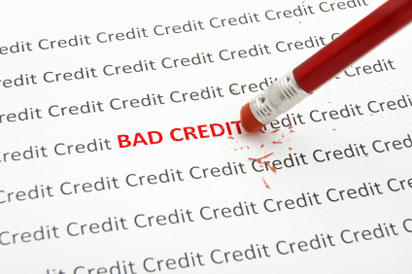Spring is traditionally a time to shake off that winter funk and drag things into the bright sunshine and allow them to air out. Your finances are the same way -- after a period of neglect, you should drag them out into the sun and see how they look. Let’s start with your credit.
Understand Key Credit Factors
The most important thing to know about your credit score is how it’s determined. Your credit score is a mix of five factors: payment history (35%), credit line utilization (30%), length of credit (15%), account mix (10%) and recent inquiries (10%). The two factors that have the most impact on your score are payment history and credit line utilization. It’s important to have a good payment history, as failing to pay bills on time will significantly hurt your score. You should try to keep borrowing under 30% of your available credit line.
Review Your Credit Report
You can get a free copy of your credit report (but not your score) every twelve months from www.annualcreditreport.com. There are three major credit reporting companies -- Equifax, TransUnion and Experian -- and you’re entitled to one report each year from each bureau. It’s a good idea to get a separate report from each reporting company because they often contain different information.
When you review your reports, look for inaccuracies and negative actions. Both of these can hurt your credit, but dealing with them will require different approaches.
Identify and Report Inaccuracies
Studies show that a significant percentage of credit reports have inaccuracies. Although many are minor, some can be significant enough to damage your credit score. So look through your credit report and look for accounts that you didn’t sign up for (believe it or not, it’s possible for accounts from someone with a similar name to get put on your account) or misreported information.
You can dispute the inaccurate information by reporting it to the credit bureau (note -- this means you may have to report separately to each of the bureaus) who will then contact your lender. Your lender has 30 days to respond to your challenge and if they don’t respond or determine that they were wrong, the item will be removed from your account.
Correct Negative Actions
Negative actions are those actions that hurt your credit score. Generally, your credit report will have a “Negative Actions” section that will provide a simple list that will highlight those things that may drag your credit down. The two biggest offenders are payment history and credit line utilization.
- Payment history tracks how well you pay on your loans, the theory being that if you’ve generally paid reliably and on-time in the past, you’ll continue to do so. However, if you pay sporadically or miss payments, you may not be a reliable money manager and may be more likely to default. If your credit report shows poor payment history, start paying on-time today and commit to good payment habits. Within six months, your past poor performance will start to lose importance and your new trend of paying on-time will become more important and your credit will start to improve.
- To calculate your credit line utilization add the total credit line amount, the amount outstanding for your credit cards and other revolving loans like home equity line of credit. Your total balance divided by your credit line is your line utilization -- the amount of available borrowing that you’re using. If this is over 50% it will really bring down your credit score. Ideally, it should be less than 10%. If you’re over 10%, commit to paying it down and create a paydown plan.
Learn About Your Credit Score
What’s your credit report? Well, it’s your credit history. The report is based on any information each bureau receives about you from the companies who have provided you with credit. Other items that will show up on your credit report will be any late payments.
Monitor Your Score
After you’ve looked through your credit report, check out your credit score. This is the number that comes out of a complicated model after the bureau runs your data through it. The most popular score is the FICO which can range from 300 to 850. Your credit score helps creditors determine how "credit worthy" you are and anything over 720 is considered good. Because poor credit means there’s a higher chance you’ll default on a loan, lenders charge higher interest rates to those with lower scores to offset these risks.
You can monitor your credit score by using a free online service like Credit Karma or Bankrate. Both will show your score and the negative actions affecting it.
Get the Latest Financial Tips
Whether you're trying to balance your budget, build up your credit, select a good life insurance program or are gearing up for a home purchase, Military.com has you covered. Subscribe to Military.com and get the latest military benefit updates and tips delivered straight to your inbox.




